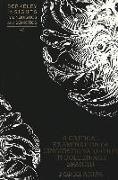Ulteriori informazioni
It has been received knowledge that Golden-Age Spanish underwent rapid change. Contending that this notion stems from lack of proper variation studies, this book reviews the concepts of change and variation in modern sociolinguistics and then examines Golden-Age Spanish in a new light. Using a pioneering approach, which combines linguistic works from 1492 to 1625 with contemporary literature, the process of comparison and microscopic contrastive analysis that permeates this work is carried out both within and between the two sources. This book essentially highlights linguistic continuity and demonstrates that, outside the confines of written norms, most of the so-called archaisms in Spanish during that period continued to be an active part of speakers' linguistic repertoire.
Info autore
The Author: Kormi Anipa is Lecturer in Spanish at the University of St. Andrews in Scotland. He received his Ph.D. in historical sociolinguistics from the University of Cambridge. In addition to articles in professional journals, he is the author of a short novel in Ewe.
Relazione
"Kormi Anipa is the first scholar to compare what the grammarians of the Spanish Golden Age said about the language of the day with spoken Spanish as represented by contemporary writers of fiction; the results are of great interest to students of Spanish language, of the literary writers and their forms, and also of grammatical practice." (Roger Wright, Professor of Spanish, University of Liverpool)

